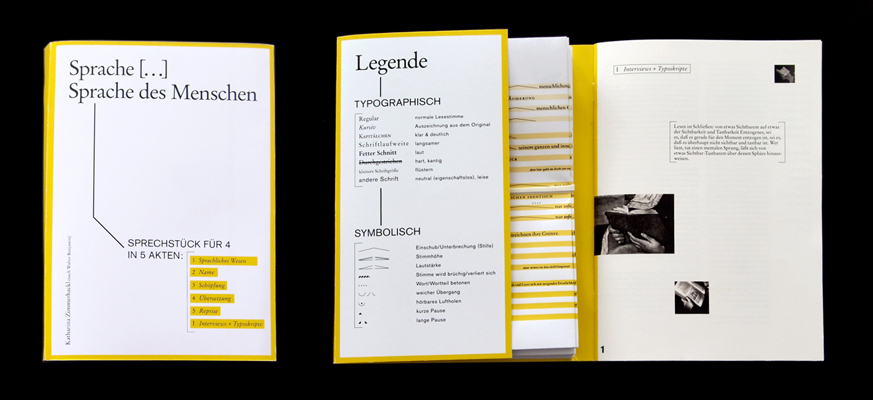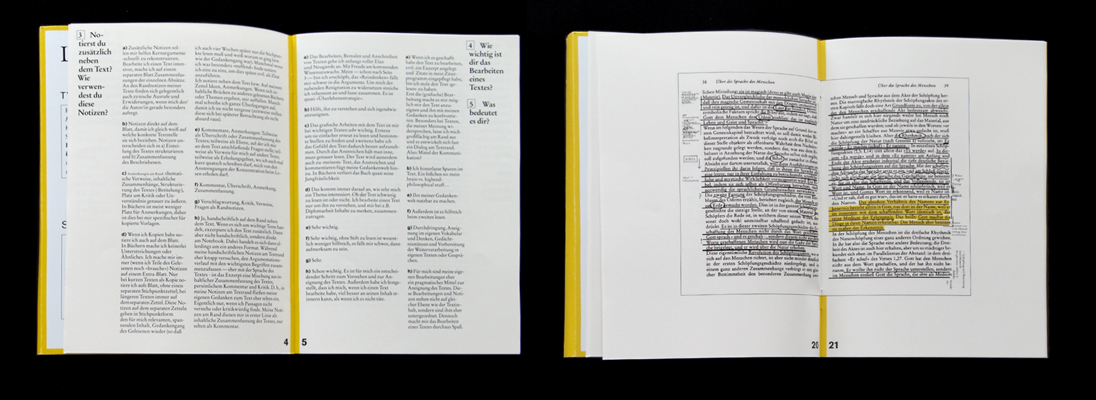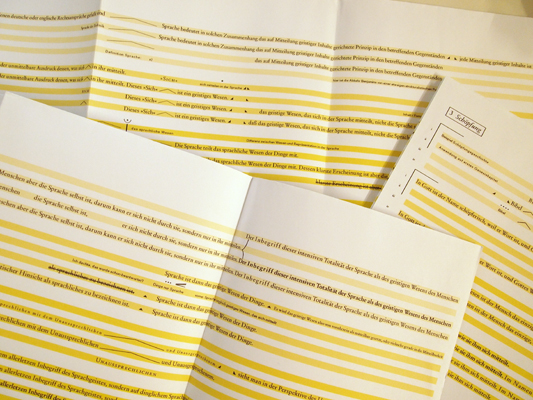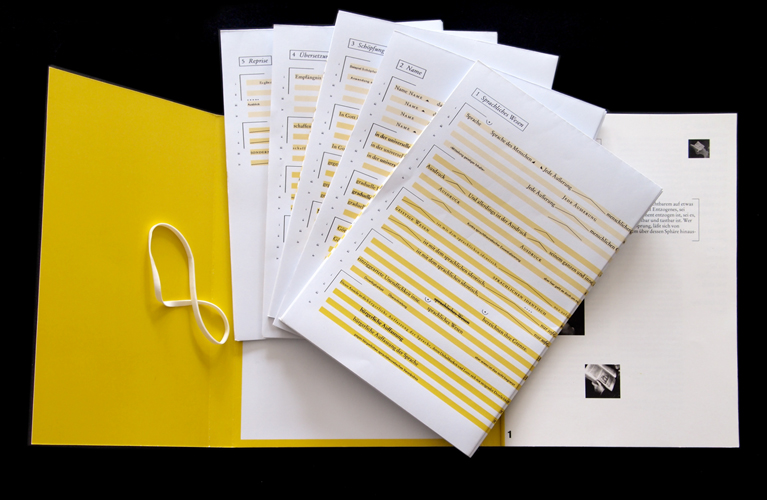Sprache […] Sprache des Menschen
While reading Freud in a reading circle I — at some point — started talking with others about the way they ›work‹ with a text. Underlining, encircling, structuring through colour?I became more interested in the connection of typography, language and the process of reading and initiated a participative project: People were invited to read a text for me, marking it as usually. For the reading I chose a text by Walter Benjamin entitled Über Sprache überhaupt und über die Sprache des Menschen — a text analysing the nature of language from a linguistic and theological perspective.
I received about 10 texts, completed with marks and annotations, which I transferred into typoscripts to make them easier to compare. Besides I prepared a short questionnaire, so that I could interpret the marks correctly. These pre-stages are bundled in a small booklet.
Following the stage of typoscripts I wanted to find a way to express these personalized texts and thus unveil the different resonating meanings of a text. I decided to make a notation of these over-worked texts — the result was a spoken piece for 4 speakers in 5 acts. The system of the notation derived from the material in the typoscripts and so e.g. only marked words were used. The notation is thus a fragmentary (re-)production of the original text, however these fragments are duplicated, whispered, screamed and so on. The written language is linked back to the more subjective and ›living‹ level of spoken language, including the personal experiences of the readers and their reactions while working through the text.
Digital Laser + Ink Jet Print | 14,8 x 21 cm (book) + 20 x 98 cm (Notation) | 2012
Listen to an excerpt here
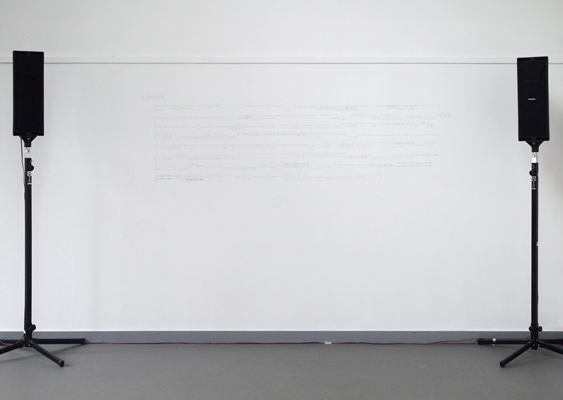
Installation View
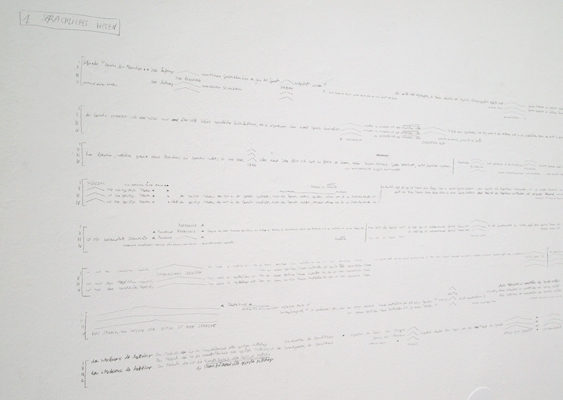
Detail Notation as Handwriting
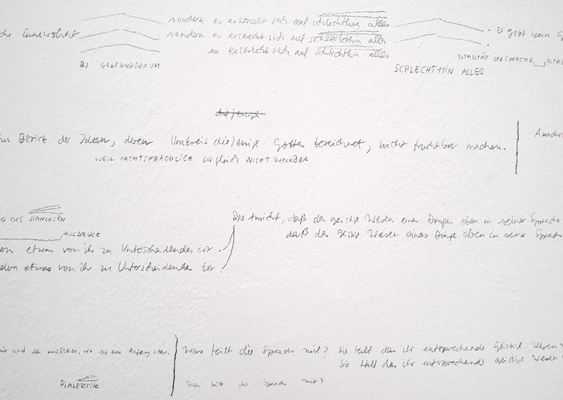
Detail Notation as Handwriting
